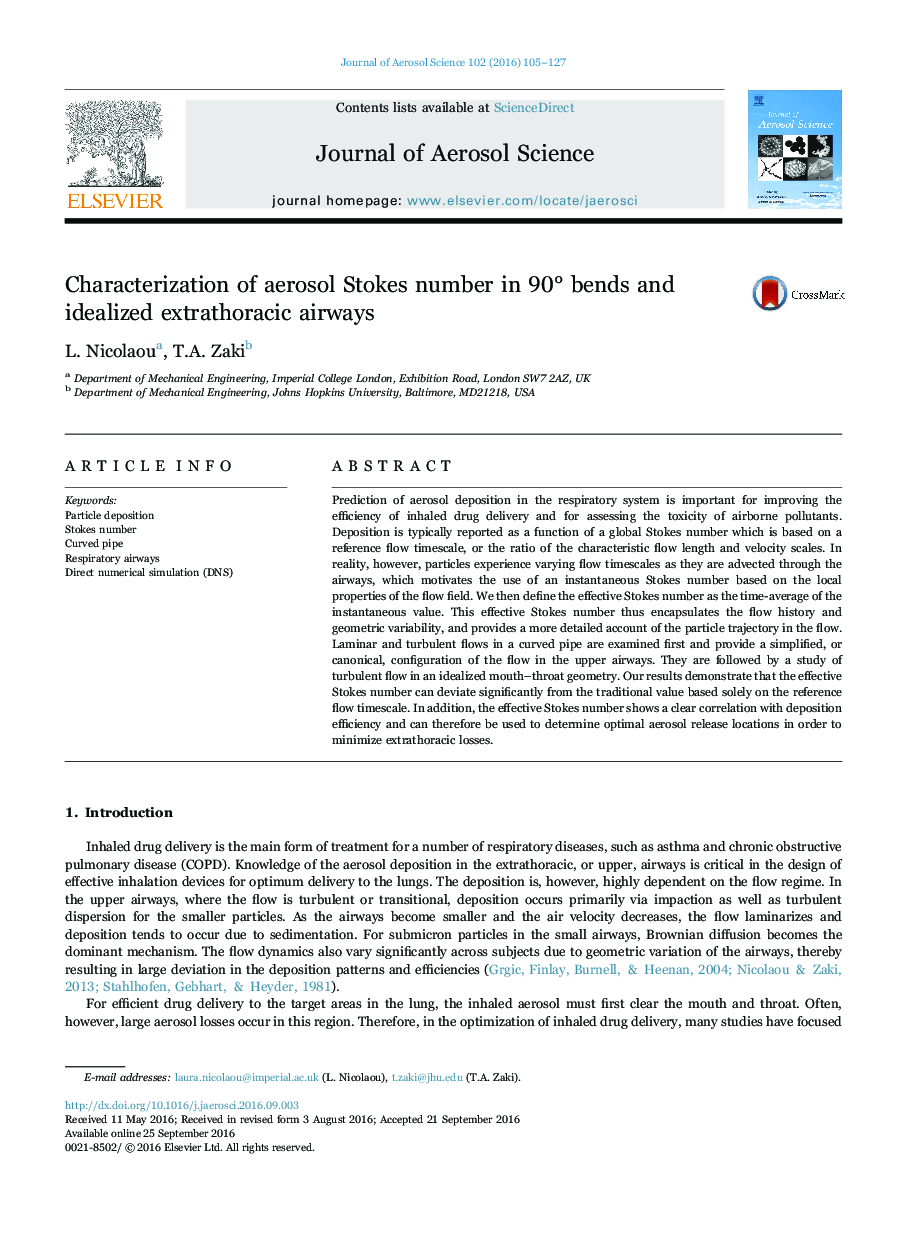| کد مقاله | کد نشریه | سال انتشار | مقاله انگلیسی | نسخه تمام متن |
|---|---|---|---|---|
| 4452193 | 1620721 | 2016 | 23 صفحه PDF | دانلود رایگان |
• DNS of aerosol transport in wall-bounded turbulent flows.
• Both canonical pipe flow and extrathoracic airways are studied.
• Effective Stokes number is proposed to account for aerosol transport and deposition.
• Correlation is demonstrated between effective Stokes and deposition efficiency.
Prediction of aerosol deposition in the respiratory system is important for improving the efficiency of inhaled drug delivery and for assessing the toxicity of airborne pollutants. Deposition is typically reported as a function of a global Stokes number which is based on a reference flow timescale, or the ratio of the characteristic flow length and velocity scales. In reality, however, particles experience varying flow timescales as they are advected through the airways, which motivates the use of an instantaneous Stokes number based on the local properties of the flow field. We then define the effective Stokes number as the time-average of the instantaneous value. This effective Stokes number thus encapsulates the flow history and geometric variability, and provides a more detailed account of the particle trajectory in the flow. Laminar and turbulent flows in a curved pipe are examined first and provide a simplified, or canonical, configuration of the flow in the upper airways. They are followed by a study of turbulent flow in an idealized mouth–throat geometry. Our results demonstrate that the effective Stokes number can deviate significantly from the traditional value based solely on the reference flow timescale. In addition, the effective Stokes number shows a clear correlation with deposition efficiency and can therefore be used to determine optimal aerosol release locations in order to minimize extrathoracic losses.
Journal: Journal of Aerosol Science - Volume 102, December 2016, Pages 105–127
